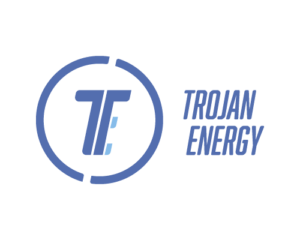APC issues supply warning over future lithium availability for EV batteries
The Advanced Propulsion Centre UK (APC) has warned that larger OEMs must secure long-term binding lithium supply contracts if they are to meet projected 2030 demand for electric vehicles.
The latest forecast from the organisation points to a further increase in global automotive battery demand to over 2,900 GWh by 2030 – more than double the requirements needed in 2025. But with the growing concern over future lithium supply, questions as to how this demand can be met are being raised. The latest figures reinforce earlier indications that only 60% of the expected battery demand for cars and vans in 2030 would be met if only the most likely lithium projects are operating by the end of the decade.
The latest APC Quarterly Demand Forecast highlights that the potential 2030 lithium deficit could be reduced if both the supply and demand sides of the lithium market work together and alternative powertrain solutions receive investment and development. In the report, the APC models future scenarios on actions vehicle manufacturers could take to reduce lithium demand in specific car and van segments, providing an assessment of the relative impact of these solutions. The report notes that if strategic demand-side decisions are made now, the 2030 lithium deficit could be reduced by as much as around 40%.
Three potential pathways could be explored to ensure automotive lithium demand remains sustainable. These include:
- Manufacturing battery electric vehicles (BEVs) with smaller batteries
- Substituting lithium with sodium-ion in smaller vehicles
- Shifting some BEV production to fuel cell electric vehicles (FCEVs), PHEVs and range extender vehicles
Battery size inflation
With the introduction of the first BEVs, like the first-generation Nissan Leaf, early adopters enjoyed a relatively modest 24 kWh battery with a range of just over 70 miles. Fast forward 10 years and the Leaf now boasts a 62 kWh battery delivering three times the range of its predecessor. While this is just one example, some forecasters believe EV battery size inflation could continue to be a significant trend throughout the remainder of this decade, but the issue of lithium supply for the manufacture of these bigger batteries remains.
OEMs know there is a demand for both standard and longer-range variants of their EVs, but the lack of lithium availability means the focus needs to shift to ‘adequate range’ vehicles with appropriately sized battery packs. Battery size inflation persists despite significant improvements in energy density.
Longer range options are attracting an increasing number of potential EV users and this will remain so unless investment and improvements are made for an increased and reliable recharging infrastructure.
Bigger batteries mean more lithium is required and findings in the report highlight that if vehicle producers continue to offer larger cars and vans to meet customer requirements, they should consider alternative powertrains such as hydrogen fuel cells to enable sustainable lithium demand.
While the APC sets a baseline global weighted average battery pack size of 65 kWh in 2030 for fully electric cars and vans, the reality based on the current trend is this could go as high as 80 kWh in a large battery pack size scenario.
Luke Bates, Automotive Trend Strategist at the APC, observed: “We have assumed OEMs want to manufacture vehicles at the targeted rates and that their production will not be affected in 2030. If this is the case, then some vehicle manufacturers may look to limit their exposure to lithium markets by adjusting their powertrain and battery chemistry strategies for 2030. Limiting battery size in larger SUVs for example may mean some customers will compromise on range but this could lead to the manufacture and therefore availability of more affordable zero emission vehicles. This reduced range does, however, point to the need to ensure that reliable EV charging infrastructure is in place and fully operational.”
Sodium-ion batteries appear a promising technology as they share the same manufacturing processes as lithium-ion with the potential for a lower cost floor. While the technology is not yet commercialised or developed for use in vehicles, China is quickly building a sodium-ion battery manufacturing capability. Yet despite early investment from Chinese companies, significant global investment is needed to displace lithium-ion in significant quantities.
Unless significant energy density improvements are made, it’s likely sodium-ion will be more suitable for smaller passenger vehicles and stationary energy storage applications. This is reflected in the analysis where we model 100% ‘A-segment vehicles adoption of sodium-ion. However, in the impact this introduction will have on lithium demand is minimal, underscoring the need for other powertrain solutions.
Hydrogen fuel cells
Hydrogen fuel cell technology is complementary to lithium-ion batteries and as a range extender, fuel cells are already a promising option for electrifying longer-range vans by supporting a lithium-ion battery that is smaller than its fully electric counterpart. In a fuel cell electric SUV, the fuel cell system would lead the propulsion of the vehicle, supported by a hybrid-sized lithium-ion battery, smaller than the BEV equivalent.
A recently published report by the APC highlights the need for investment in scaling up manufacturing of hydrogen fuel cell systems for them to align with future battery costs.
Julian Hetherington, Automotive Transformation Director at the APC, said: “Globally, investment is still needed if hydrogen fuel cell systems are to be implemented at scale. A gigafactory is currently being built in the UK to manufacture membrane electrode assemblies and we have key automotive manufacturers here in the UK that could attract further investments across the supply chain. To maximise the potential impact of fuel cells and other net-zero propulsion solutions, recharging and refueling infrastructures need significant investment.
“What is clear is the predicted lithium imbalance in 2030 cannot be solved solely through investment in sustainable lithium extraction and recycling. Investments in alternative powertrain and battery solutions are also needed. The demand for EVs by 2030 is expected to grow significantly compared to what we will see in 2025, and action needs to be taken now to address this. Carbon emission reduction targets mean we cannot afford to wait and see what happens. The APC recognises the importance of supporting the automotive industry to develop robust supply chains in order to deliver and meet targets as set out in the Net Zero Strategy. The UK Government has committed to achieve this transformation in the automotive industry, and our Automotive Transformation Fund (ATF) is one of the funding routes we have in place to support large-scale industrialisation.”
Image courtesy of Shutterstock.





































































































